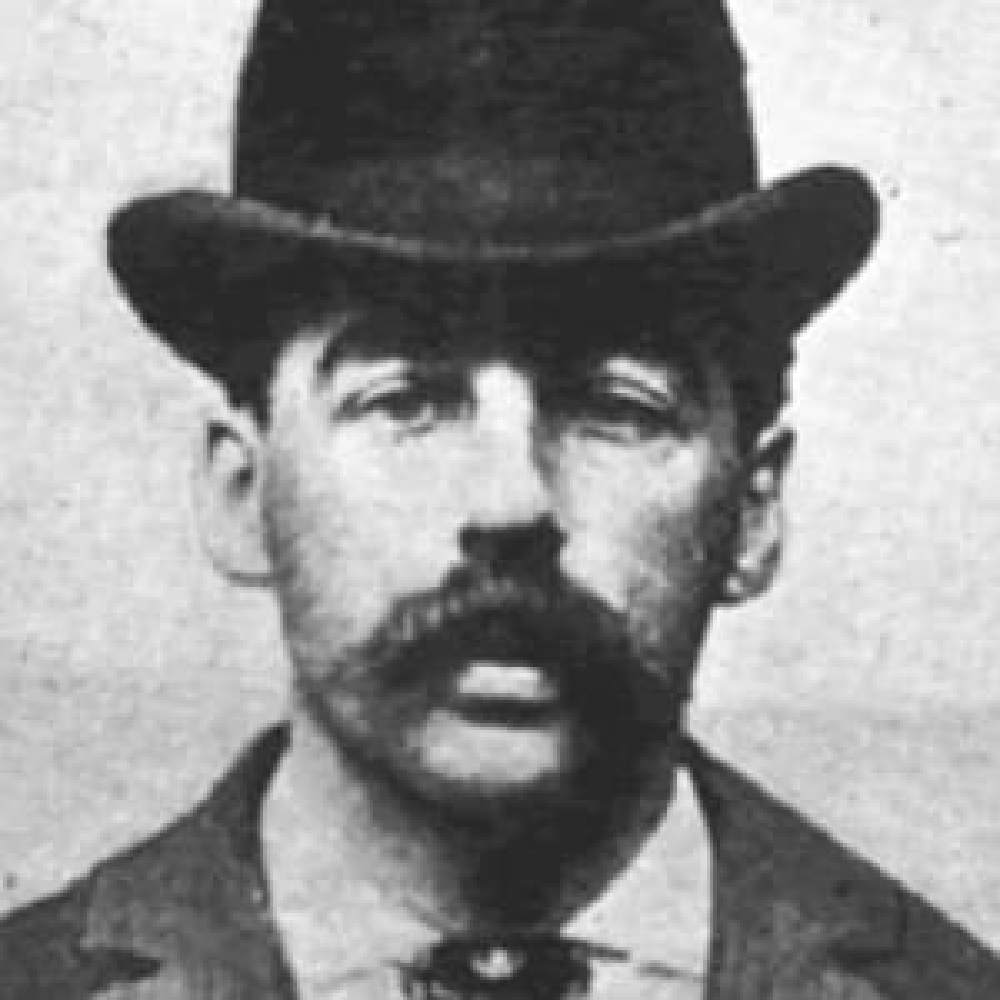The story of H.H. Holmes is not only interesting, but invites many questions and theories. Some of these theories have been about whether or not Holmes could have been Jack the Ripper, the Whitechapel murderer.

Holmes himself / Picture Credit: Biography.com
While this may seem outlandish, Holmes’ past may intrigue some into thinking about the connection between the two.
Who was H.H. Holmes?
H.H. Holmes was the alias of America’s first (alleged) serial killer, Herman Webster Mudgett.
He was born in May 1861.
During the 1893 Columbian Exposition (a world’s fair held in Chicago to celebrate the 400th anniversary of Christopher Columbus’ arrival in the new world in 1492), he lured many victims into what would be called his ‘Murder Castle’.
Sometimes referred to as the ‘Beast of Chicago’, Holmes is believed to have killed a rather wide spectrum of victims, ranging from 20 to 200 people.
He committed many of these killings in a specially-constructed home, later given the aforementioned haunting nickname, the ‘Murder Castle’.
After being caught in 1894, he was hanged for his crimes two years later in 1896.
Childhood and early life
Born in Gilmanton, New Hampshire, Holmes was immediately part of a pretty wealthy family.
He enjoyed a privileged childhood, and was said to be unusually smart at an early age – a common childhood trait for many serial killers.
Holmes also expressed an interest in medicine early on in his life, which supposedly led him to practice surgery on a cat.
Once again, many serial killers often experiment with animals by killing them or torturing them – usually when they are in their youth.
It was also suspected that Holmes may have been responsible for the death of a friend…
Holmes’ later crimes began with frauds and scams.
As a medical student at the University of Michigan, Holmes actually stole corpses and used them to make false insurance claims.
He may have used the bodies for experimentation, also.
The ‘Murder Castle’
In 1885, Holmes moved from New Hampshire to Chicago, Illinois.

He quickly found a job at a pharmacy using his now infamous alias, Doctor Henry Holmes.
He eventually took over the business, but he was later rumoured to have killed the original owner – which would not be surprising.
Holmes had a three-story house built nearby, creating an extravagant house of horrors.
The upper floors were his living quarters, as well as many small rooms in which he tortured and killed many of his victims.
There were traps doors and chutes leading down to the basement, allowing him easily disposal of the bodies. In the basement, he could then either burn any remains in a kiln, or dispose of them by other means.
During the 1893 Columbian Exposition, Holmes opened up his home as a hotel for visitors – unfortunately, not many guests (if any) would survive the ‘Murder Castle’.
Many of the victims were women (the number of women is uncertain) who were seduced, swindled, then murdered.
Holmes had a very peculiar habit of getting engaged to a woman, only for her to suddenly ‘disappear’.
Other victims were lured by an offer of employment.
Schemes
Holmes left Chicago shortly after the World’s Fair to continue his schemes, including plan with associate Benjamin Pitezel, who would fake his death to collect $10,000 of life insurance.
After being jailed for another fraud, Holmes confided in a fellow inmate, who knew Holmes as H.M. Howard, about the scheme involving Pitezel. Thus inmate later told investigators about the details of Holmes’ plan.

While ‘Howard’ was identified as Holmes, it was not before his final murders took place – the killing of Pitezel and three of his children.
Arrest and death
After several weeks of outrunning authorities, Holmes was eventually captured in November 1894.
Estimates about the number of Holmes’ victims range from 20 to 200.
Holmes died in May 1896 when he was hanged for the murder of Pitezel.
Now, about Jack the Ripper…
Jack the Ripper, as you are probably aware, was a serial killer in and around 1888 in Whitechapel, London.
Many, if not all of the Ripper’s victims were female prostitutes and were killed then mutilated in the dead of night.
Many people look into Holmes and Jack the Ripper today, and some have come up with a theory that they may be the same person.
Jeff Mudgett, a lawyer and former Commander in the U.S Naval Reserve, claims his great-grandfather, who changed his name from Herman Mudgett to Henry Holmes, was Jack the Ripper.
Mudgett bases this off of writings in two diaries he inherited from Holmes, which detail Holmes’ participation in the murder and mutilations of numerus prostitutes in London.
This would actually make sense, as Holmes was not caught until 1894, and his background in medicine and job as a pharmacist would match with the Ripper’s seemingly skilful and knowledgeable mutilations.
Mudgett also claims that the man who was Hanged in 1896 for the murder of Benjamin Pitezel was not actually Holmes, but someone who Holmes tricked or bribed into taking his place on the gallows.
This part of Mudgett’s theory, however, seems rather improbable.
Mudgett has written a book titled Bloodstains, which highlights the murderous stories about Holmes and Jack the Ripper.
Written by Melissa, who you can follow on Twitter @melissajournal
RELATED: Sinister Saturday: The Story of Marshall Applewhite and the 'Heaven's Gate' Cult
Cults are nearly always sinister, with deaths, rules and sacrifices all being made. However, the Heaven's Gate cult was something very different indeed.
Who was Marshall Applewhite?
Applewhite was the leader of a religious cult, known as Heaven’s Gate, in Texas during the 1990s.
He was a self-proclaimed prophet, drawing rhetoric from science fiction and scripture.
He led his group of followers to commit mass suicide in 1997.
His close partner, Bonnie Lu Nettles, decided they were ‘the two’ mentioned in the ‘Book of Revelation’, meant for an important mission... to read more click HERE
Tagged in True Crime

